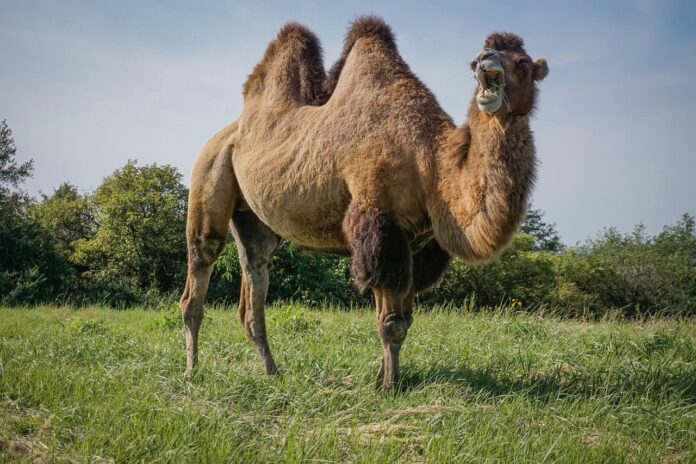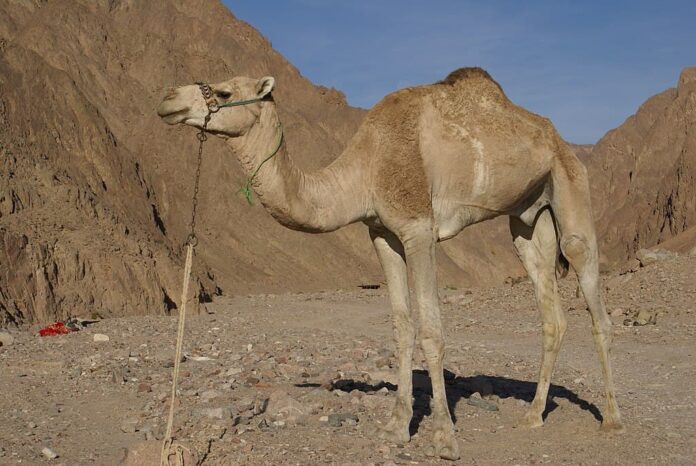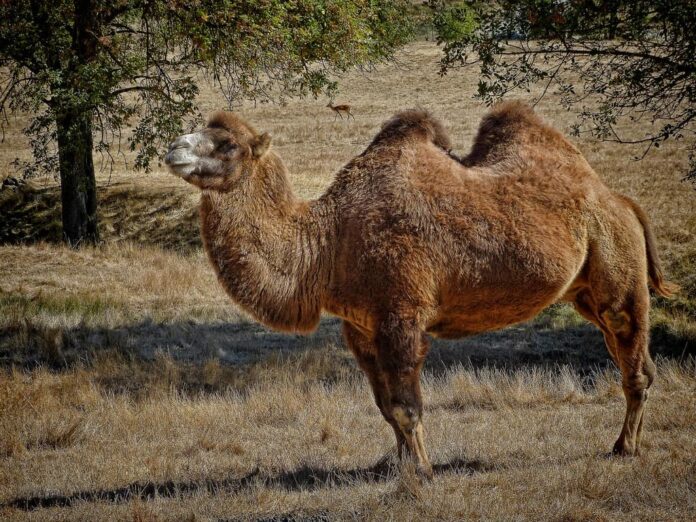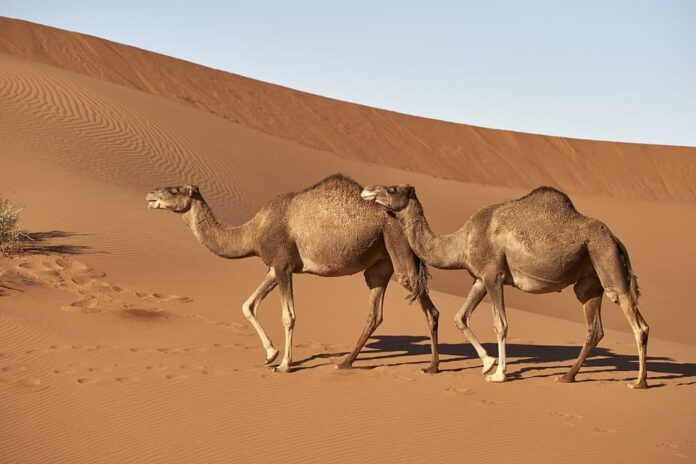There are only 3 camel species, and two of them are domesticated. The domesticated camel species have been around humans for over 3,000 years already. Camels are tough animals that thrive in the desert, and they are the perfect mode of transportation for sandy journeys. We are going to take a look at some basic information about the 3 camel species in the world today. Let’s take a look and see how much you know about these awesome desert dwellers below.
1Bactrian Camel

Where: Central Asia, East Asia
Bactrian camels are the largest camels among the 3 species with a height of 2.2 to 3.5 meters. Despite the size, they can run up to 40 mph in short bursts and maintains speeds of up to 25 mph. This camel species is one of the most adaptable animals in the world due to their ability to withstand extreme temperatures. In fact, Bactrian camels can adapt to temperature changes between -30 degrees Celsius to +40 degrees Celsius without a problem.
They have dark brown or sandy beige wooly coats with a long mane on the neck and throat. The thick and shaggy coat functions as a protection against cold weather and winter. It will fall away or the camel will shed it as the temperature rises when the hot season comes. On top of that, the thick coat reflects sunlight which helps to prevent overheating during their journeys on hot desert sand.
Along with that, Bactrian camels have two broad toes on each foot with undivided soles that are able to spread widely. This is to allow them to walk on sand and help them to navigate rough rocky terrain and shifting desert sans without sinking. On top of that, these camels have sealable nostrils that stop the sand from getting up their nose. They also have bushy eyebrows, long eyelashes, and third eyelids to protect their eyes from sand.
A Bactrian camel has two humps that function as the area for storing fat which they turn into energy. This allows them to travel for days without food or water, especially in harsh conditions in the deserts. These camels are herbivores, and they are capable of eating almost all types of vegetation including dry, bitter, and thorny plants. Their tough digestive system also allows them to eat bones, carcasses, skin, and pretty much anything when nutrient sources are not available. As for water, a very thirsty Bactrian camel can drink up to 30 gallons of water in less than 15 minutes.
Even more fascinating, they are the only land mammals that are capable of drinking salt water without any effects. Sometimes these camels also eat ice and snow to provide water need, but only a small amount at a time. Once the camel uses the fat, its humps become flabby and droopy. These camels are migratory so their habitats range from flat arid deserts and rocky mountains to sand dunes and more. There are less the one million individuals at the moment, and their population is not in a good state.
2Dromedary Camel

Where: Afghanistan, Middle East, Sahara Desert
Arabian camels or dromedary camels have only one hump, but it functions just as well as two. This species has a long and curved neck with a narrow chest along with short hair on its hump, shoulders, and throat. The color of the coat ranges from black and brown to white, and the short hair protects them from heat. A camel’s hump can store up to 80 pounds of fat, allowing it to travel up to 100 miles in the desert without water.
Dromedary camels are diurnal, and they live in a group of about 20 members up to a hundred or more. Most members are female, and the group is led by a dominant male while the female leader is also common sometimes. When members argue, they usually snap at each other or stamp their feet to show displeasure. These camels are non-aggressive so they don’t bite each other except for rutting males during the mating season.
Just like Bactrian camels, this species also has large and tough lips that allow them to eat dry and thorny desert vegetation. Along with that, they are capable of drinking up to 30 gallons of water in 10 minutes. As desert dwellers, dromedary camels have lockable nostrils along with long eyebrows and eyelashes for protection against blowing sand. This is why they are able to live in arid and semiarid regions in Africa, the Arabian Peninsula, and the deserts more easily.
For thousands of years, people use dromedary camels as domestic animals for various purposes. Their strength has been helping in not only transportation but also plowing in vegetation fields. These strong camels can carry large loads and walk up to 25 miles a day on different road conditions. At the same time, these camels are also the sources of leather, meat, milk, and wool as well. There are around 15 million dromedary camels in various parts of the world nowadays.
3Wild Bactrian Camel

Where: Mongolia & Remote Areas Of Northwest China
Just like the name suggests, this species is the closest relative to the domesticated Bactrian camels. The difference is that this one lives in the remote and wild desert locations of China and Mongolia. Some of them are also found in arid plains and hills, feeding on shrubs as their primary food source. These camels are very tough, and they can withstand drought, food shortage, and even radiation. Wild Bactrian camels live in groups of 2 to 100, and they travel long distances together for food and water.
Thanks to their tough nature, these camels adapt to even the most fragile and hostile regions in the world. This is why they are also found in the harsh Gobi Desert where food and water are dry and scarce. Plus with the double row of long and thick eyelashes and hair on the ears, even sandstorms cannot harm them. Not different from other camel species, this one is also able to drink brackish water and eat snow.
Because they are wild animals, people hunt them illegally for meat which leads to the decline of their population. Another threat that affects their number is land mines in the salt springs where they dwell. Apart from those, attacks from wolves and access to water due to human interference are also the reasons. Wild Bactrian camels are now endangered, with fewer than 1,000 individuals living nowadays.
Related Post: Types Of Rhinoceros




